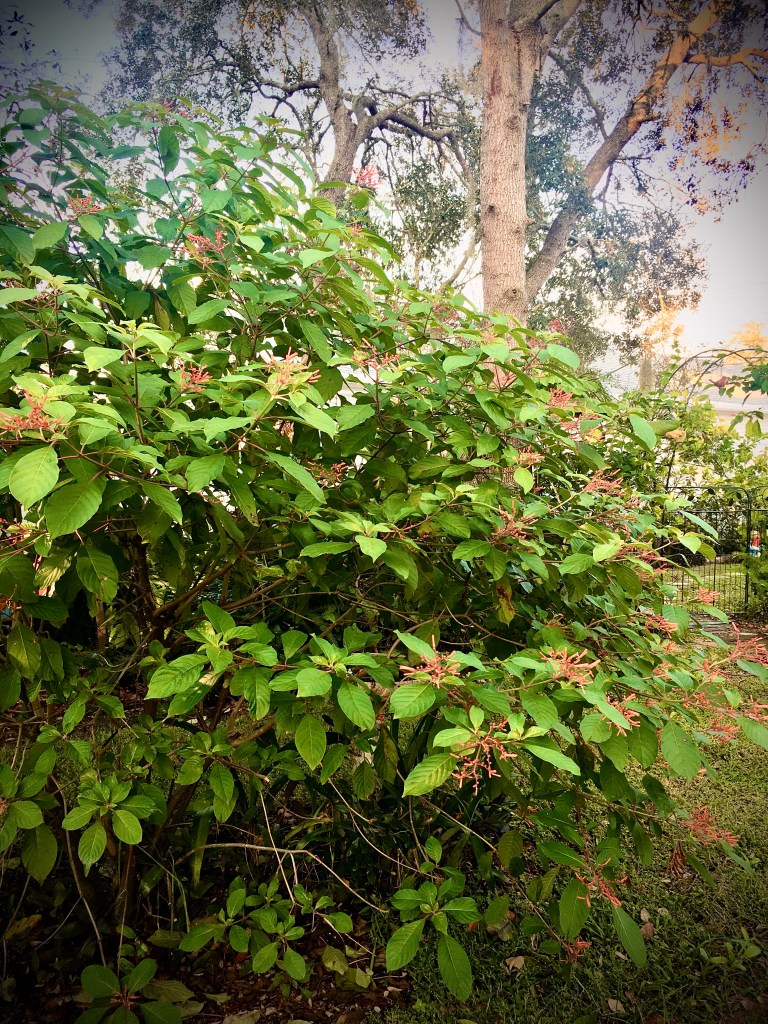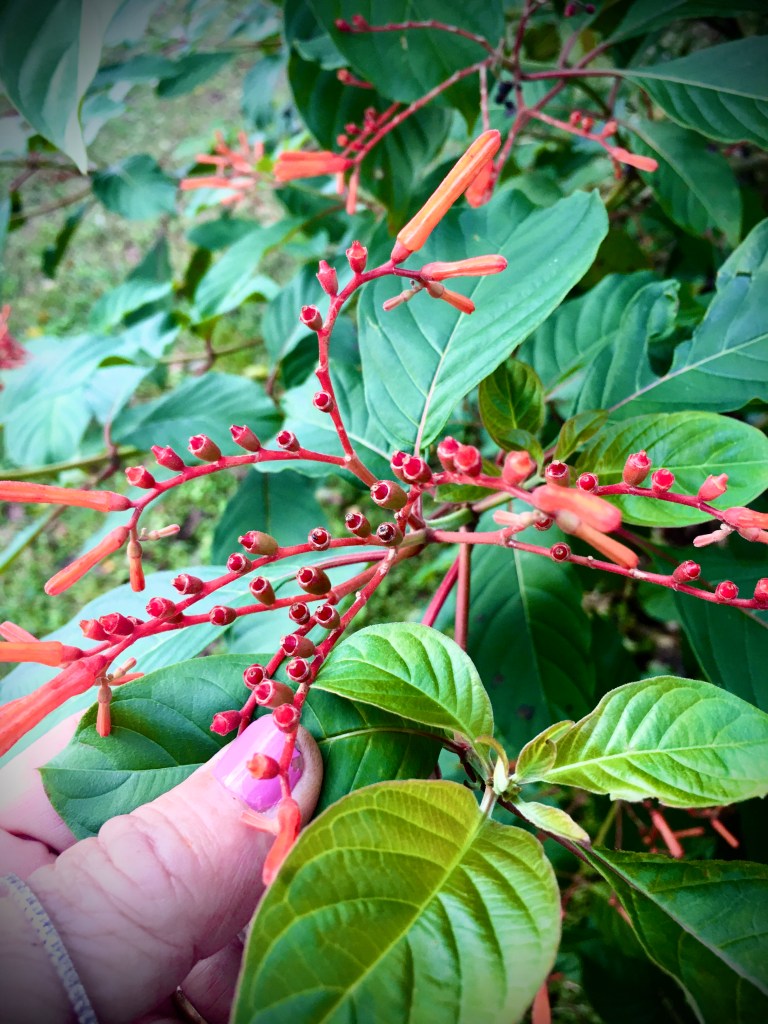Hummingbirds and butterflies enjoy the nectar in the flowers.

There is a continuous crop of these seedy fruits and birds are quite fond of them.
The sap has been used to treat skin rashes.
The firebush can be used as a foundation plant for large buildings and is superb when placed in the background of a mass of shrubs in a border. It is excellent in a mass planting and functions well as a screen or border. A hedge of firebush will need regular clipping. Flowers are often removed during this process.

Hamelia patens can be found growing naturally in a variety of situations in Florida from Sumter County southward. However, it grows best when well supplied with moisture and prefers a full sun to partial shade location in the landscape.

This plant can take heat and drought, but a strong wind can cause some leaf browning.
Though native, it is quite tender and can be killed to the ground during a freeze. Regrowth from the roots is rapid and rampant, and it has proven to be root hardy through zone 9.
It functions very well as an annual in more northerly zones. The firebush is known to be tolerant of the lime bearing (high soil pH) soils of southern Florida.
Fertilize this plant sparingly to bring out its best characteristics, and do not allow lawn grasses to invade its root zone.
Propagate Hamelia patens by seed (which must be fresh), cuttings, or air-layers.
Pest and Diseases

Occasional attacks of scales or mites may require control measures. New growth may be attacked by aphids in early spring, but natural predators often rapidly check the invasion. In south Florida, larvae of a moth species sometimes partially defoliates the stems, but they are easily controlled if you wish.
Scientific name: Hamelia patens
Pronunciation: huh-MEE-lee-uh PAY-tenz
Common name(s): firebush, scarlet bush
Family: Rubiaceae
Plant type: shrub
USDA hardiness zones: 9 through 11 (Fig. 2)
Planting month for zone 9: Apr; May; Jun; Jul; Aug; Sep
Planting month for zone 10 and 11: Feb; Mar; Apr; May; Jun; Jul; Aug; Sep; Oct; Nov; Dec
Origin: native to Florida
Uses: specimen; accent; screen; border; mass planting; attracts butterflies; attracts hummingbirds
Description
Height: 6 to 12 feet
Spread: 5 to 8 feet
Plant habit: spreading
Plant density: dense
Growth rate: fast
Texture: medium
Foliage
Leaf arrangement: whorled
Leaf type: simple
Leaf margin: undulate
Leaf shape: ovate
Leaf venation: brachidodrome; pinnate
Leaf type and persistence: evergreen
Leaf blade length: 4 to 8 inches
Leaf color: green
Fall color: red
Fall characteristic: showy
Prune it as needed to keep it to a reasonable size but avoid over-pruning. This will limit the production of flowers. You can propagate firebush by seed or by cuttings.

For southern gardeners, growing a firebush is a great way to add color and density to a space. With the right conditions of sun, heat, and moderately dry soil, you can easily keep this pretty bush happy and thriving in your garden.
